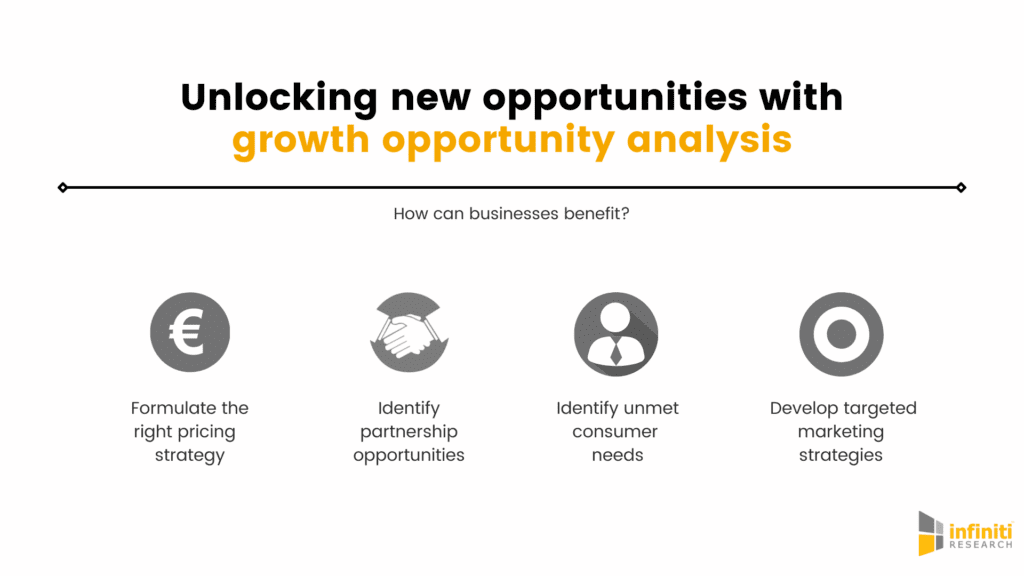Introduction
In today’s globalized economy, businesses face numerous opportunities and challenges when expanding into international markets. The process of entering a new market is complex and multifaceted, requiring a comprehensive approach to ensure success. A robust market entry strategy is crucial for navigating these complexities and achieving sustainable growth. This strategy involves understanding the target market, analyzing competitive landscapes, and choosing the most effective method to introduce your products or services.
Expanding into international markets offers significant potential for growth and diversification. It allows businesses to tap into new customer bases, increase revenues, and reduce dependence on a single market. However, without a well-planned approach, companies risk encountering various pitfalls such as cultural misunderstandings, regulatory hurdles, and intense competition.
In this comprehensive guide, we will explore the key components of developing an effective strategy for entering new markets. We will delve into different types of market entry methods, the steps involved in creating a market entry plan, and the challenges businesses may face along the way. By leveraging insights from top-performing competitors and industry experts, this guide aims to equip you with the knowledge and tools needed to successfully expand into new markets.

Understanding Market Entry Strategy
A market entry strategy is a planned method of delivering goods or services to a new target market and distributing them there. It involves the systematic study of the market, understanding consumer needs, and determining the most efficient way to enter the market. This approach is pivotal for businesses aiming to tap into international markets.
Why a Market Entry Strategy is Essential
A well-defined approach for entering a new market helps businesses:
- Identify and understand the target market.
- Minimize risks associated with entering new markets.
- Allocate resources efficiently.
- Achieve long-term growth and sustainability.
Next, we’ll cover various types of strategies for entering new markets, which provide different pathways for businesses to establish their presence in new markets.
Types of Market Entry Strategies
There are several approaches businesses can take when entering new markets. Each strategy has its advantages and challenges, depending on the company’s goals, resources, and market conditions.
Exporting
Exporting is one of the simplest and most commonly used strategies for entering a new market. It can be categorized into:
- Direct Exporting: Involves selling products directly to customers in another country.
- Indirect Exporting: Utilizes intermediaries such as agents or distributors to sell products in foreign markets.
Licensing
Licensing allows a company to grant rights to another company to use its brand, technology, or product in a specific market. This strategy is cost-effective and involves low risk, making it an attractive option for many businesses.
Franchising
Franchising is an extension of licensing where a business (franchisor) grants the right to another business (franchisee) to operate using its brand and business model. It is commonly used in the service sector, particularly in fast food and retail industries.
Joint Ventures
A joint venture involves two or more companies collaborating to enter a new market. This strategy helps businesses leverage local expertise and share risks and rewards.
Company Ownership
Establishing a wholly-owned subsidiary is an approach where a company sets up its own operations in the target market. This approach provides maximum control but involves higher risks and costs.
Greenfield Investments
Greenfield investments involve starting a new venture from scratch in the target market. This strategy provides full control over operations but requires substantial capital investment.
Next, we’ll discuss how to develop a detailed entry plan, which includes essential steps such as market research and competitive analysis.
Developing a Market Entry Plan
Creating an entry plan involves several critical steps to ensure a successful entry into a new market.
Market Research
Conduct thorough market research to understand the market size, consumer trends, competition, regulatory barriers, and government support. This information helps businesses make informed decisions about their entry approach.
Key Elements to Research:
- Market Size: Assess the potential demand for your products or services.
- Consumer Trends: Identify preferences and buying behaviors of the target market.
- Competition: Analyze existing competitors and their market share.
- Regulatory Barriers: Understand the legal and regulatory requirements in the target market.
- Government Support: Investigate any incentives or support programs for foreign businesses.
Competitive Analysis
Analyze competitors’ strategies, strengths, and weaknesses to identify opportunities and threats. This step is crucial for developing a unique value proposition and positioning your business effectively in the market.
Steps for Effective Competitive Analysis:
- Identify Key Competitors: List the main competitors in the target market.
- SWOT Analysis: Evaluate competitors’ strengths, weaknesses, opportunities, and threats.
- Benchmarking: Compare your business performance with competitors.
- Market Positioning: Determine how to differentiate your product or service.
Next, we’ll look at selecting the appropriate mode of entry based on your business needs and market conditions.
Selecting the Mode of Entry
Choose the most suitable mode of entry based on your business goals, resources, and market conditions. Whether it’s exporting, licensing, franchising, joint ventures, or company ownership, each mode has its advantages and challenges.
Factors to Consider:
- Cost: Evaluate the cost implications of each mode of entry.
- Control: Consider the level of control you require over operations.
- Risk: Assess the risks associated with each entry mode.
- Scalability: Determine how easily you can scale operations in the new market.
Developing a Unique Value Proposition
Your unique value proposition should address the specific needs and preferences of the target market. It differentiates your product or service from competitors and attracts potential customers.
Steps to Craft a Unique Value Proposition:
- Identify Customer Pain Points: Understand the problems faced by your target audience.
- Highlight Key Benefits: Emphasize the benefits of your product or service.
- Differentiate from Competitors: Showcase what makes your offering unique.
- Communicate Clearly: Ensure your value proposition is concise and compelling.
Next, we will focus on the implementation phase, detailing how to put your strategy into action effectively.
Implementing the Strategy
Develop a detailed implementation plan, including timelines, budgets, and resource allocation. Ensure that all stakeholders are aligned and committed to the strategy.
Implementation Plan Checklist:
- Timeline: Create a realistic timeline for key activities.
- Budget: Allocate necessary funds for each phase of the plan.
- Resources: Identify the required resources, including personnel and technology.
- Milestones: Set measurable milestones to track progress.
Monitoring and Evaluation
Regularly monitor and evaluate the performance of your market entry strategy. Make necessary adjustments based on market feedback and changing conditions to ensure continued success.
Key Performance Indicators (KPIs) to Track:
- Market Penetration: Measure the market share gained.
- Revenue Growth: Track the increase in sales and revenue.
- Customer Feedback: Collect and analyze feedback from customers.
- Operational Efficiency: Assess the efficiency of your operations in the new market.
Finally, we’ll discuss the challenges businesses face during market entry and how to overcome them effectively.
Challenges in Market Entry and How to Overcome Them
Entering a new market comes with its own set of challenges. Here, we’ll discuss common obstacles and strategies to overcome them.
Regulatory Barriers
Navigating regulatory barriers can be challenging for businesses entering new markets. Engage with local experts and legal advisors to ensure compliance with local laws and regulations.
Tips to Overcome Regulatory Barriers:
- Research Thoroughly: Understand the regulatory environment of the target market.
- Consult Experts: Work with legal and regulatory experts.
- Compliance: Ensure your business complies with all local regulations.
Cultural Differences
Understanding and respecting cultural differences is crucial for success in international markets. Conduct cultural sensitivity training for your team and adapt your marketing strategies to resonate with the local audience.
Strategies to Manage Cultural Differences:
- Cultural Training: Provide training for employees on cultural sensitivity.
- Local Adaptation: Adapt marketing and product offerings to local preferences.
- Engage Locals: Hire local staff to bridge cultural gaps.
Competition
Intense competition can hinder market entry efforts. Differentiate your products or services through innovation, quality, and superior customer service.
Ways to Stay Competitive:
- Innovation: Continuously innovate to stay ahead of competitors.
- Quality: Maintain high standards of product or service quality.
- Customer Service: Provide exceptional customer service to build loyalty.
Sourcing and Control
Maintaining control over sourcing and supply chains is vital for ensuring product quality and consistency. Establish reliable local partnerships and invest in robust supply chain management systems.
Improving Sourcing and Control:
- Reliable Partners: Partner with trustworthy suppliers and distributors.
- Supply Chain Management: Invest in advanced supply chain management systems.
- Quality Assurance: Implement strict quality control measures.
How Infiniti Research solved their client with their market entry issues
About the client
The client is by far one of the most well-known cybersecurity solution providers in the market. Headquartered in Switzerland, the company looked to other countries for growth opportunities from its inception, establishing its first office in the late ’70s. In 1990, the client merged with a leading cybersecurity company, broadening their product and service portfolio to include cloud and cloud security services.
We help our clients identify strategic growth opportunities driven by market trends to meet unmet customer needs and expand into newer market segments. Request a free proposal if you’re looking for similar solutions.
Business challenge
Despite its undisputed success, the client found several inefficiencies while expanding their business operations beyond its home market. Hence the client needed to decide whether to invest in or close a failing business unit. The difficulty in forecasting market size made it challenging for the team to maintain its growth momentum and find new growth opportunities in the mature European and North American markets.
The cybersecurity business environment has become increasingly challenging due to a rise in competition. Therefore the cybersecurity services provider found itself in an unfamiliar position and were on the lookout for a customized solution to address their challenge. The challenges included increased price competition in several key segments and sub-segments, a rise in new players entering the market, and high competitive pressures.
The company faced challenges in building updated systems and processes to keep up with the dynamic market requirements and consumer demands. These challenges were further compounded, leading to a rise in operational costs. The client realized that analyzing the key competitors is not enough to thrive in a competitive market. They needed to attain a more comprehensive understanding of the markets to find new growth opportunities and expand business operations. The company approached us looking to leverage our expertise in growth opportunity assessments to address their challenges.
We have the expertise required to support any current insight needs that you may have. If you have any queries, please feel free to contact us, and our team will be happy to assist you.
Solution offered
The client wanted to devise a growth strategy to identify emerging markets and build a substantial position by addressing the needs of its growing consumer base. To help the client, we conducted an in-depth growth opportunity analysis of target and under-served markets. This shed light on market needs, potential product benefits, growth potential, and competitors. Growth opportunity analysis also helped determine the capital investment, analyze the ROI, and develop launch strategies for new segments.
However, the successful execution of the strategy for developing markets required flexibility, the ability to adapt to local business requirements, and a long-term perspective for building a sustainable business. Hence we adopted a holistic approach to growth opportunity analysis to help the client assess market dynamics and find suitable segments. It included the following phases-
- Frame storming
- Market research
- Capability mapping
- Primary research
- Stakeholder interviews
- Competitor mapping
Adopting this six-step approach to market growth opportunity analysis helped the client determine the capital investment, analyze the ROI, and develop a robust strategy to expand the operation by successfully pursuing new growth opportunities.
Request a free brochure for insights on how market intelligence solutions can support your business requirements and help you make crucial business decisions.
Business outcome
Growth opportunity analysis enabled the client to gain detailed insights on new market opportunities across geographies. The strategic insights helped the client outpace the competition in the new cloud services market segments.
Within six weeks, the client witnessed a remarkable increase in the profits generated from the new markets.
Growth opportunity analysis also empowered the client with-
- Insights on global market trends, including market drivers, limitations, and technology trends
- Detailed revenue forecasts and growth opportunities in the market over the next five years
- The future market and consumer demand outlook
Why choose Infiniti’s growth opportunity analysis solution
To find new growth opportunities, businesses must understand the competitive landscape and market attractiveness. Growth opportunity analysis helps organizations to find new opportunities to connect their products and services with the end-users.
Growth opportunity assessments also help organizations comprehend the potential challenges and barriers to entry by shedding light on the business environment across niche market segments. Infiniti’s approach to market growth opportunity analysis is comprehensive and has helped various companies to gain actionable data and insights to devise effective strategies and successfully capitalize on new opportunities. Looking for in-depth insights on the business benefits of growth opportunity analysis? Request more info now!


